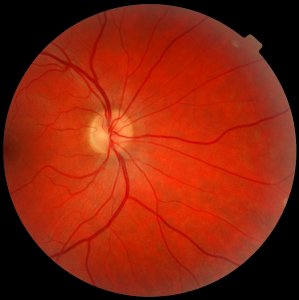 I had my eyes tested a couple of weeks ago, ended up with new reading glasses (did I already say? Means I’m going to have to change my avatar again). Anyway, I have a close relative with glaucoma so the optician/ophthalmologist usually does a pressure test on my eyes. She uses a non-contact tonometer. This device fires a puff of air straight at the front of your eye and measures the time between the start of the air moving and the flattening of the cornea as the air hits using lights and optics and stuff. The time interval is calibrated with intraoccular pressure.
I had my eyes tested a couple of weeks ago, ended up with new reading glasses (did I already say? Means I’m going to have to change my avatar again). Anyway, I have a close relative with glaucoma so the optician/ophthalmologist usually does a pressure test on my eyes. She uses a non-contact tonometer. This device fires a puff of air straight at the front of your eye and measures the time between the start of the air moving and the flattening of the cornea as the air hits using lights and optics and stuff. The time interval is calibrated with intraoccular pressure.
It’s uncomfortable but avoids the need for anaesthetic drops in the eyes and means your eyes are not being impinged by a plastic or metal disc as with the old sprung devices.
My ophthalmologist knew the principles of intraocular pressure and why she was measuring it, but wasn’t so sure how the device actually “read” the pressure. Like I say the device simply times the gap between puffing the air and the distortion of the cornea as the air hits, which is calibrated with eye pressure. It’s a process that occurs on a timescale of thousandths of a second, milliseconds. Critically, it takes less time for the puff of air to flatten a soft eye than it does a hard eye. A harder eye is one with a higher intraocular pressure and thus a greater risk of glaucoma.
My pressures were fine, although a slight discrepancy between eyes meant the ophthalmologist wanted to carry out a follow-up test. To be honest, from this site, I’d have been inclined to ignore the outlier she saw with my left eye and to assume the difference was down to her testing the right eye first. As I said, it’s an uncomfortable feeling having air puffed repeatedly in your eye and it does make you tense and squint.
Anyway, the follow-up test is a vision field test, which involves staring at a marker on a screen in a darkened room and indicating when and how many dim spots of light appear as generated by a computer. Thankfully, my field test was fine. Oddly though, my ophthalmologist took several attempts to get defeat my vision, raising the point that maybe I could see in the infrared. It’s not that, I just eat a lot of carrots.
More on non-contact tonometry here.
Glaucoma is an eye disease in which the optic nerve becomes damaged because of increased fluid pressure in the eye. The term ‘ocular hypertension’ is used for people with consistently raised intraocular pressure without any associated optic nerve damage. Conversely, the term ‘normal tension’ or ‘low tension’ glaucoma is used for those with optic nerve damage and associated visual field loss but normal or low pressure.